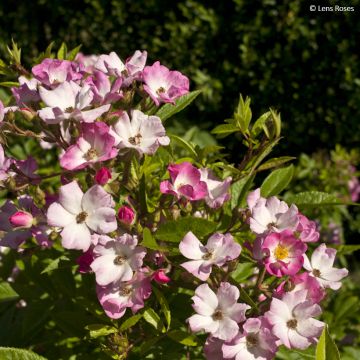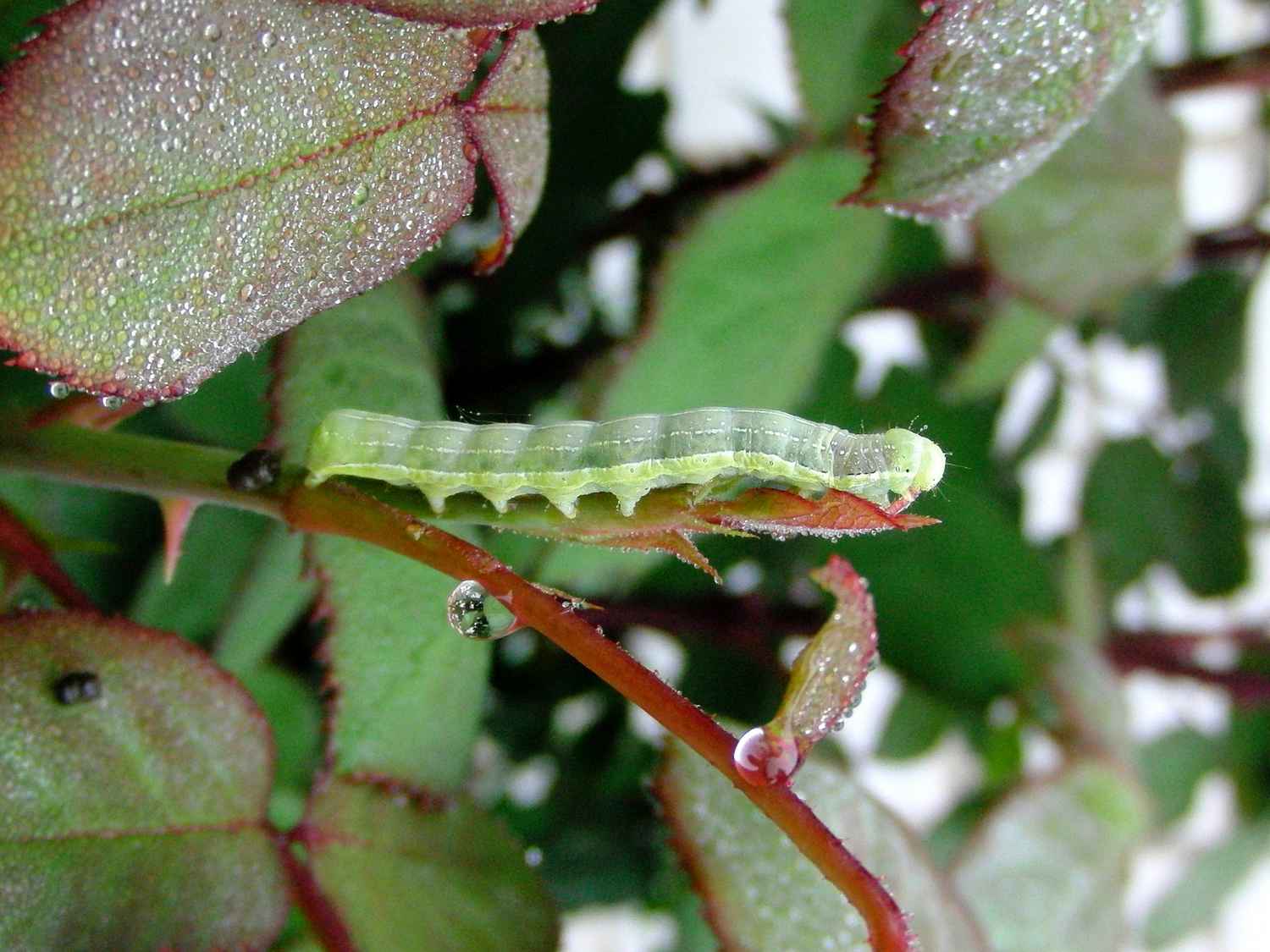

Rosier à fleurs groupées Orienta Laila
Rosa x Hulthemia persica Orienta Laila
Rosa x Hulthemia persica Orienta® Laila
Hybrid Persian Rose
Special offer!
Receive a €20 voucher for any order over €90 (excluding delivery costs, credit notes, and plastic-free options)!
1- Add your favorite plants to your cart.
2- Once you have reached €90, confirm your order (you can even choose the delivery date!).
3- As soon as your order is shipped, you will receive an email containing your voucher code, valid for 3 months (90 days).
Your voucher is unique and can only be used once, for any order with a minimum value of €20, excluding delivery costs.
Can be combined with other current offers, non-divisible and non-refundable.
Why not try an alternative variety in stock?
View all →This plant carries a 24 months recovery warranty
More information
We guarantee the quality of our plants for a full growing cycle, and will replace at our expense any plant that fails to recover under normal climatic and planting conditions.
Would this plant suit my garden?
Set up your Plantfit profile →
Description
The 'Orienta Laila' Rose is a surprising modern hybrid that descends from the Persian rose, named Hulthemia persica. It has inherited from its ancestor lost in the deserts of Central Asia a very contrasting heart that still fascinates rose breeders. 'Laila' produces single roses, light in appearance, light pink with a dark pink throat, tightly packed in clusters. Delicately scented wild rose flowers that bloom profusely on a robust bush, highly disease-resistant. This pretty plant, with a long flowering period, intensively visited by pollinators, always has a great impact in the garden, but also in pots.
The Rosa x persica 'Orienta Laila', introduced by German rose breeder Tantau in 2020, won the Gold Medal in Baden-Baden in 2022. It descends from a wild rose discovered in 1784 by botanist André Michaux in the Zagros Mountains, spanning Iran and Iraq. The unique bicolour flowers it offers have since prompted breeders to attempt hybridisation with other species and cosmopolitan varieties better suited to our climates. After years of research and selection, highly promising new hybrid cultivars were developed, first in England and then in Germany.
'Orienta Laila', classified in the floribunda rose category, is a spiny bush with an upright and bushy habit that reaches about 1.20 m (4ft) in height and 60 cm (24in) in width. It has a long and abundant flowering period, from June to October. Its branches bear beautiful foliage in dark green, slightly glossy, dentate, remarkably healthy. The single flowers, formed by 5 petals arranged in cups, measure 5 cm (2in) in diameter. They have a deep pink heart on a background of varying shades of pink depending on the stage of flowering. Their fragrance is pleasant, light, and delicate.
Wild and precious, the 'Orienta Laila' Rose is a special rose that will blend well in a natural-style flowerbed, planted in groups of 3 to 5 plants, or alongside other roses with a natural appearance (Astronomia, Bee's Paradise Pink, Rosanatura Rosea). This unusual variety deserves a prime location. It can also be grown in a large pot on the terrace. It is also hardy enough to withstand our normal winters, making it suitable for adoption everywhere. With its moderate growth, it will adapt to smaller spaces in city gardens. Along the edge of a flowerbed, for example, it can be paired with pink foxgloves or white ones, lavender, or pretty grasses like Muhlenbergia capillaris. This rose is also beautiful in front of a mass of tall asters (Aster laevis, Aster turbinellus), or surrounded by pink yarrows and basket of gold.
Plant habit
Flowering
Foliage
Botanical data
Rosa
x Hulthemia persica
Orienta® Laila
Rosaceae
Hybrid Persian Rose
Cultivar or hybrid
Other Roses A to Z
View all →Planting and care
The 'Orienta Laila' rose is not demanding in terms of soil type, it only fears an excess of limestone and soils that are too heavy and suffocating. It thrives in sunny regions, up to 1000 m (3281ft) altitude, and is not afraid of diseases, cold, or summer drought once well established. However, a lack of water will dry up its generous flowering. It adapts to all gardens, as long as the planting is taken care of! Plant it in ordinary, well-worked, and properly drained soil. It may be useful to remove dead wood in winter and lightly prune it at the end of winter.
Planting period
Intended location
Care
Planting & care advice
This item has not been reviewed yet - be the first to leave a review about it.
Haven't found what you were looking for?
Hardiness is the lowest winter temperature a plant can endure without suffering serious damage or even dying. However, hardiness is affected by location (a sheltered area, such as a patio), protection (winter cover) and soil type (hardiness is improved by well-drained soil).

Photo Sharing Terms & Conditions
In order to encourage gardeners to interact and share their experiences, Promesse de fleurs offers various media enabling content to be uploaded onto its Site - in particular via the ‘Photo sharing’ module.
The User agrees to refrain from:
- Posting any content that is illegal, prejudicial, insulting, racist, inciteful to hatred, revisionist, contrary to public decency, that infringes on privacy or on the privacy rights of third parties, in particular the publicity rights of persons and goods, intellectual property rights, or the right to privacy.
- Submitting content on behalf of a third party;
- Impersonate the identity of a third party and/or publish any personal information about a third party;
In general, the User undertakes to refrain from any unethical behaviour.
All Content (in particular text, comments, files, images, photos, videos, creative works, etc.), which may be subject to property or intellectual property rights, image or other private rights, shall remain the property of the User, subject to the limited rights granted by the terms of the licence granted by Promesse de fleurs as stated below. Users are at liberty to publish or not to publish such Content on the Site, notably via the ‘Photo Sharing’ facility, and accept that this Content shall be made public and freely accessible, notably on the Internet.
Users further acknowledge, undertake to have ,and guarantee that they hold all necessary rights and permissions to publish such material on the Site, in particular with regard to the legislation in force pertaining to any privacy, property, intellectual property, image, or contractual rights, or rights of any other nature. By publishing such Content on the Site, Users acknowledge accepting full liability as publishers of the Content within the meaning of the law, and grant Promesse de fleurs, free of charge, an inclusive, worldwide licence for the said Content for the entire duration of its publication, including all reproduction, representation, up/downloading, displaying, performing, transmission, and storage rights.
Users also grant permission for their name to be linked to the Content and accept that this link may not always be made available.
By engaging in posting material, Users consent to their Content becoming automatically accessible on the Internet, in particular on other sites and/or blogs and/or web pages of the Promesse de fleurs site, including in particular social pages and the Promesse de fleurs catalogue.
Users may secure the removal of entrusted content free of charge by issuing a simple request via our contact form.
The flowering period indicated on our website applies to countries and regions located in USDA zone 8 (France, the United Kingdom, Ireland, the Netherlands, etc.)
It will vary according to where you live:
- In zones 9 to 10 (Italy, Spain, Greece, etc.), flowering will occur about 2 to 4 weeks earlier.
- In zones 6 to 7 (Germany, Poland, Slovenia, and lower mountainous regions), flowering will be delayed by 2 to 3 weeks.
- In zone 5 (Central Europe, Scandinavia), blooming will be delayed by 3 to 5 weeks.
In temperate climates, pruning of spring-flowering shrubs (forsythia, spireas, etc.) should be done just after flowering.
Pruning of summer-flowering shrubs (Indian Lilac, Perovskia, etc.) can be done in winter or spring.
In cold regions as well as with frost-sensitive plants, avoid pruning too early when severe frosts may still occur.
The planting period indicated on our website applies to countries and regions located in USDA zone 8 (France, United Kingdom, Ireland, Netherlands).
It will vary according to where you live:
- In Mediterranean zones (Marseille, Madrid, Milan, etc.), autumn and winter are the best planting periods.
- In continental zones (Strasbourg, Munich, Vienna, etc.), delay planting by 2 to 3 weeks in spring and bring it forward by 2 to 4 weeks in autumn.
- In mountainous regions (the Alps, Pyrenees, Carpathians, etc.), it is best to plant in late spring (May-June) or late summer (August-September).
The harvesting period indicated on our website applies to countries and regions in USDA zone 8 (France, England, Ireland, the Netherlands).
In colder areas (Scandinavia, Poland, Austria...) fruit and vegetable harvests are likely to be delayed by 3-4 weeks.
In warmer areas (Italy, Spain, Greece, etc.), harvesting will probably take place earlier, depending on weather conditions.
The sowing periods indicated on our website apply to countries and regions within USDA Zone 8 (France, UK, Ireland, Netherlands).
In colder areas (Scandinavia, Poland, Austria...), delay any outdoor sowing by 3-4 weeks, or sow under glass.
In warmer climes (Italy, Spain, Greece, etc.), bring outdoor sowing forward by a few weeks.





























































